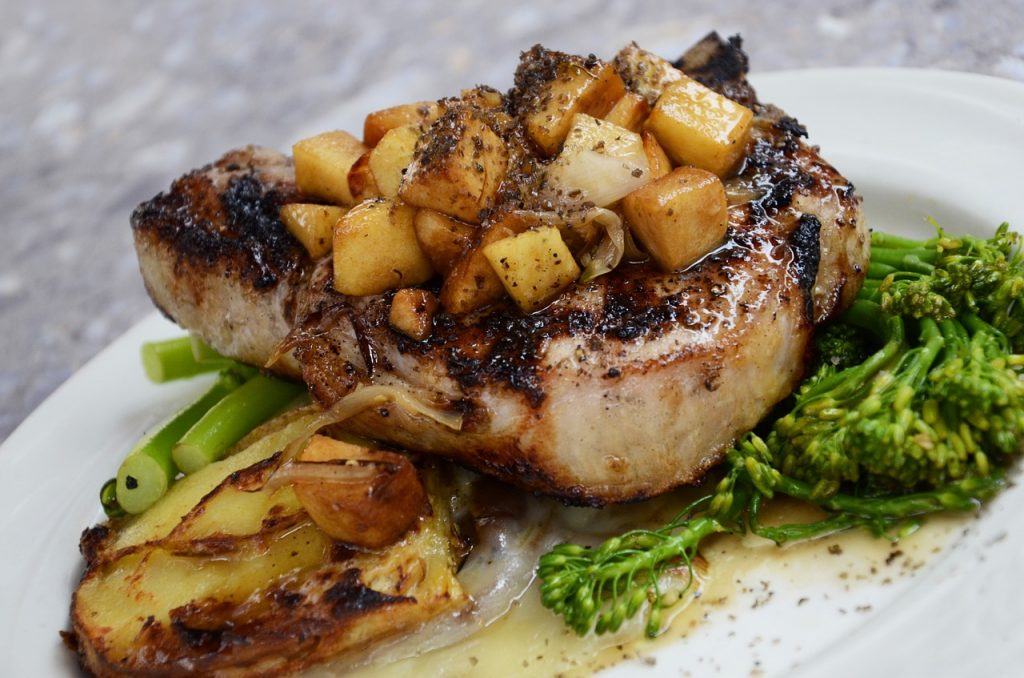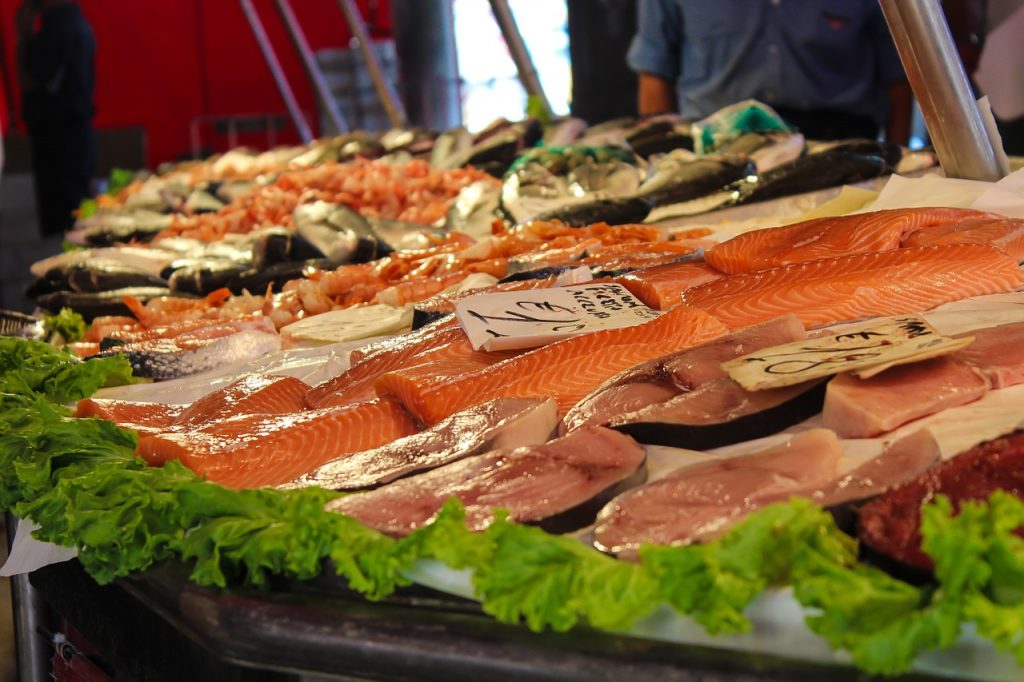Eating habits have changed a lot in the past fifteen years since street food took off and turned our kitchens at home into showrooms or neglected rooms. I was amazed that Americans do not have the habit of cooking at home, but order food or eat out. Especially when I visited North America and saw that only one in ten Americans knows how to cook a decent meal.
It’s no wonder that America is full of obese people, when they don’t know food at all, even though the fitness centers are full and the whole fitness lifestyle comes from them. It is not enough to know what we eat, but also to know the nutritional values in order to put together a healthy meal.
Everything has changed since bakeries started popping up on every corner in Croatia. We eat a large amount of carbohydrates with a high glycemic index, which quickly raises blood sugar, and we poison ourselves with saturated fats and hidden sugars. Calorie bombs are at every turn and nobody does anything about it. It is not that it is not written about in the media or that the school is not taught, but one thing is theory on paper, and the other is practice in real life.
If we don’t see the president or the prime minister of the country eating healthy, why should we as a nation deal with it, when even the one who leads the country has not raised awareness or initiated something. Why should we walk and lose weight and get in shape when we don’t see anyone from the government walking up the hill to the parliament, instead they block the entire traffic as they pass by in their official vehicles. Why should we cook healthily in schools, kindergartens or colleges, when in the parliamentary canteen, unhealthy food is served at its best. How many people from the parliamentary benches even lead a healthy life and promote it?

The world is full of people with diabetes, and obesity is a common disease of every nation. The disease is mostly the laziness of the individual to deal with nutrition, although it is somewhat rarer is a hereditary disease. It is not only diabetes, but a whole series of diseases caused by a catastrophic diet, but nothing is done. There is no single national revitalization plan except in Japan.
We don’t have our own nutritional standard, only recommended daily values that conflict with each other because they were adopted from different institutions.
The proportion of energy substances in the daily meal should contain:
Proteins 1-1.5g per kilogram of weight if we do not exercise. If we exercise, we increase the protein to 2 g to a maximum of 3 grams per kilogram of weight (professional athletes enter this category).
My weight is around 90 kilograms and I am an athlete who tries to consume 2 g of protein per kilogram of weight so that I can function normally during the day. This means that I need 180 grams of protein per day, which I am often unable to consume in quantity, even though I watch my diet and cook at home. I spend most of the year protein deficient and it shows clearly in my blood count resulting in occasional severe fatigue or loss of muscle mass.
Translated into food, this would amount to between 700-800 grams of meat or fish or protein from vegetables. These are huge amounts of proteins that are impossible to get in our daily diet if we eat out. It is difficult to prepare such a quantity of protein at home, so protein powder preparations are used.
RELATED ARTICLE: MEAL PLANNING AND EVALUATION
If we take a person who does not exercise with a weight of 70 kilograms and wants to consume only 1g of protein per kilogram of weight, which is the minimum dose, it is necessary to eat 70 grams of protein per day. That is between 300 and 400 grams of meat or fish per day (depending on which meat or fish because there are differences in the amount of protein). Let’s recall our daily meals and can we talk about a sufficient amount of protein?
We have mostly had our fill of carbohydrates, even if we ate in the canteen at work, school, college or assembly. The menu is full of empty calories, and we still think we’re eating healthy and wonder what makes us fat.

One example from the faculty canteen. As a vegetarian diet and meat-free meals were introduced, additional chaos arose. Not knowing the nutritional values or worse, knowing them but not respecting them, students are offered a vegetarian menu of pasta with mushroom sauce or moussaka with cheese or lasagna with spinach and similar as a complete meal. Italian cuisine is well aware of nutritional values and there it falls under “primi piatti” or the first meal that is carbohydrate, and “secondo piatti” is a protein meal. This means a piece of meat, fish or peas with a salad without a carbohydrate side dish (rice, potatoes, dough, etc.). Where is that other protein meal in the canteen?
The protein values that come in the dough are extremely low, and the carbohydrates are too much. In the end, the vegetarian gains weight, tries to eat healthy, and in the end is still hungry. That is absurd. The veggie menu is not based on carbohydrates, but on proteins from vegetables such as soy products – tofu, seitan, tempeh and larger amounts of chickpeas along with carbohydrates.
Meat and fish meals are also devastating. Although a portion should contain a minimum of 150 grams of meat or fish, which amounts to some 30-35 grams of protein, this norm is not respected in every meal, but is reduced to 100 grams of meat, plus a side dish (high glycemic index oleohydrate and hidden fat), bread and salad and dessert cake (sugars, carbohydrates with a high Kligemic index and hidden fats). All in all, our children are fed disastrously, and nothing is better, not even in restaurants.
In general, modern restaurant cuisine is one big carbohydrate bomb and it is important to be aware of what we eat and how much we eat. Restaurants are a great thing if we have the money, but the menu should be arranged wisely so as not to be in a deficit with proteins and overdo it with carbohydrates and fats. Eating well does not mean eating healthy. If we order sea bass or sea bream with Swiss chard, we can talk about a high-quality protein meal, but that is rare.
Even if we take in enough protein with meat, fish and veggie meals, we have to watch out for fat intake. With my 90 kilos and 180g of protein, I must not eat pure 700-800g of red meat because I would badly overdo it with fats from meat.
An example is that chicken breast has 23 g of protein per 100 g and only 1 g of fat per 100 g, while pork shoulder contains 19 g of protein per 100 g and even 23 g of fat per 100 g. I’m happier with fish and vegetable proteins, whose values range between 18-22 g of protein per 100 g, with 1-2 g of fat per 100 g, except for salmon, which has 14 g of fat, but the unsaturated ones are healthy.
Deficiency of protein and excess of fat and carbohydrates is the standard of human modern man in more than 90% of cases. We’ve made so much progress, and we’re still lagging behind in nutrition awareness. Everything is offered to us, but we are not able to choose healthy. This is not so much about the individual as about the unresponsive collective.
Gone are the days when we watched bodybuilders put on pounds of chicken breast to maintain or increase their muscle mass and stories of unhealthy protein intake from various unhealthy shakes. The fact remains that we have to become aware of how we feed ourselves nowadays, when fast and empty food is marketed to us on every corner for the purpose of making money without any motive for the health of the nation. The collective does not work and we must turn to ourselves and take care of our own health. If we are lazy for that, I guess we are not lazy to take care of our children’s health.






